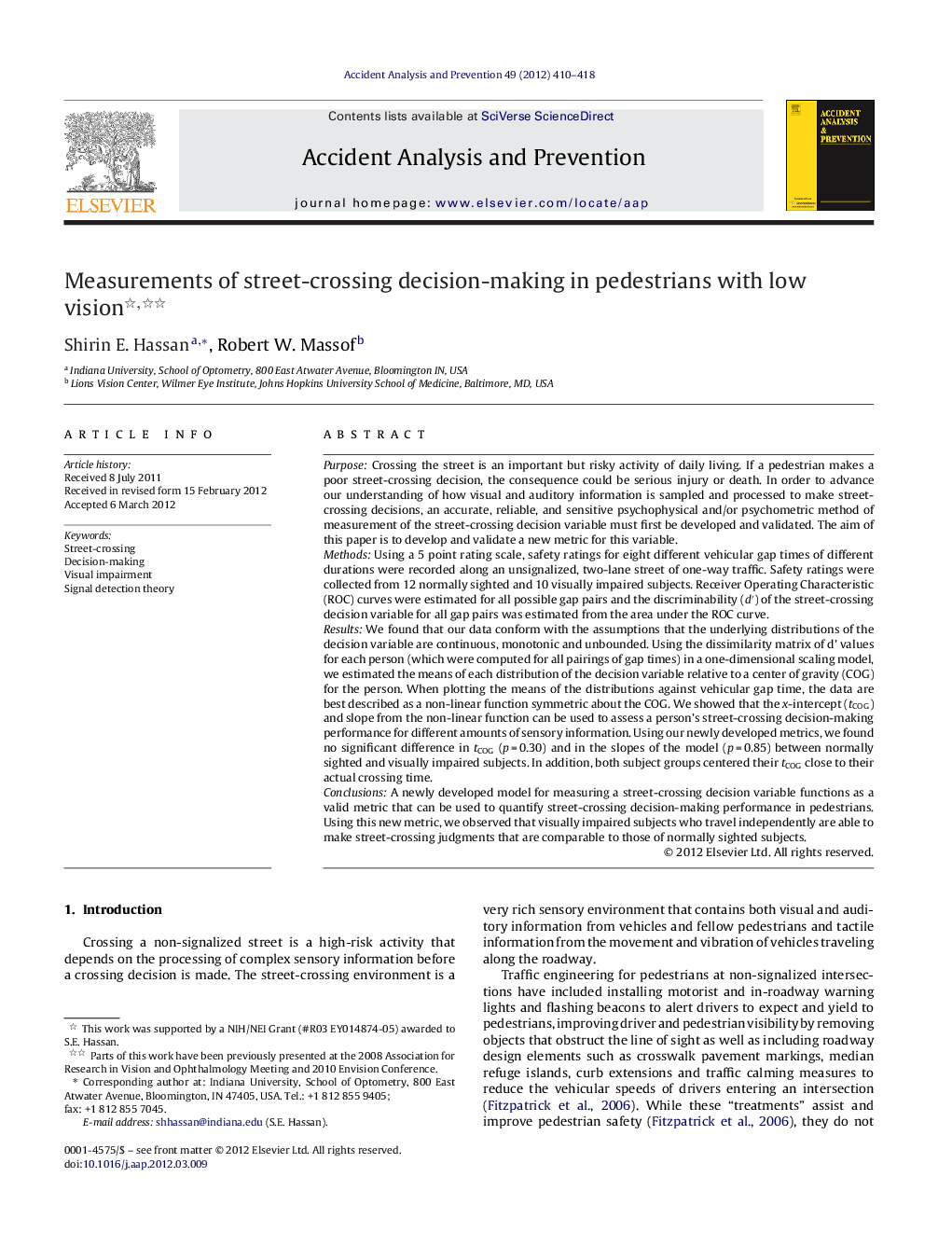| کد مقاله | کد نشریه | سال انتشار | مقاله انگلیسی | نسخه تمام متن |
|---|---|---|---|---|
| 572678 | 1452948 | 2012 | 9 صفحه PDF | دانلود رایگان |

PurposeCrossing the street is an important but risky activity of daily living. If a pedestrian makes a poor street-crossing decision, the consequence could be serious injury or death. In order to advance our understanding of how visual and auditory information is sampled and processed to make street-crossing decisions, an accurate, reliable, and sensitive psychophysical and/or psychometric method of measurement of the street-crossing decision variable must first be developed and validated. The aim of this paper is to develop and validate a new metric for this variable.MethodsUsing a 5 point rating scale, safety ratings for eight different vehicular gap times of different durations were recorded along an unsignalized, two-lane street of one-way traffic. Safety ratings were collected from 12 normally sighted and 10 visually impaired subjects. Receiver Operating Characteristic (ROC) curves were estimated for all possible gap pairs and the discriminability (d′) of the street-crossing decision variable for all gap pairs was estimated from the area under the ROC curve.ResultsWe found that our data conform with the assumptions that the underlying distributions of the decision variable are continuous, monotonic and unbounded. Using the dissimilarity matrix of d’ values for each person (which were computed for all pairings of gap times) in a one-dimensional scaling model, we estimated the means of each distribution of the decision variable relative to a center of gravity (COG) for the person. When plotting the means of the distributions against vehicular gap time, the data are best described as a non-linear function symmetric about the COG. We showed that the x-intercept (tCOG) and slope from the non-linear function can be used to assess a person's street-crossing decision-making performance for different amounts of sensory information. Using our newly developed metrics, we found no significant difference in tCOG (p = 0.30) and in the slopes of the model (p = 0.85) between normally sighted and visually impaired subjects. In addition, both subject groups centered their tCOG close to their actual crossing time.ConclusionsA newly developed model for measuring a street-crossing decision variable functions as a valid metric that can be used to quantify street-crossing decision-making performance in pedestrians. Using this new metric, we observed that visually impaired subjects who travel independently are able to make street-crossing judgments that are comparable to those of normally sighted subjects.
► We developed a model for measuring street-crossing decision-making performance in pedestrians.
► The model's x-intercept and slope assesses street-crossing decision-making performance.
► Visually impaired people make street-crossing judgments comparable to normally sighted people.
Journal: Accident Analysis & Prevention - Volume 49, November 2012, Pages 410–418